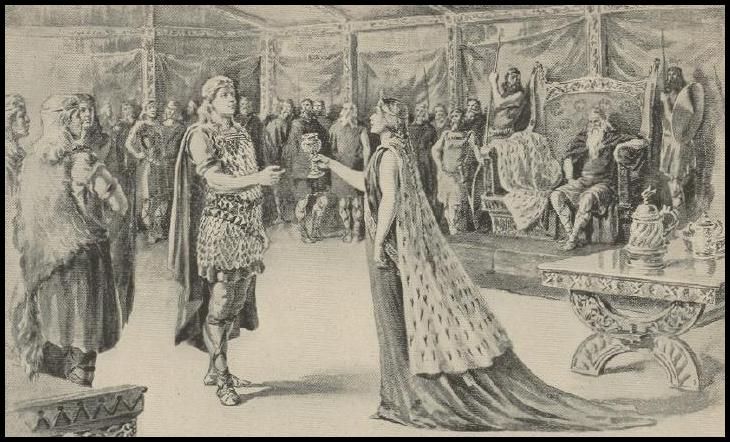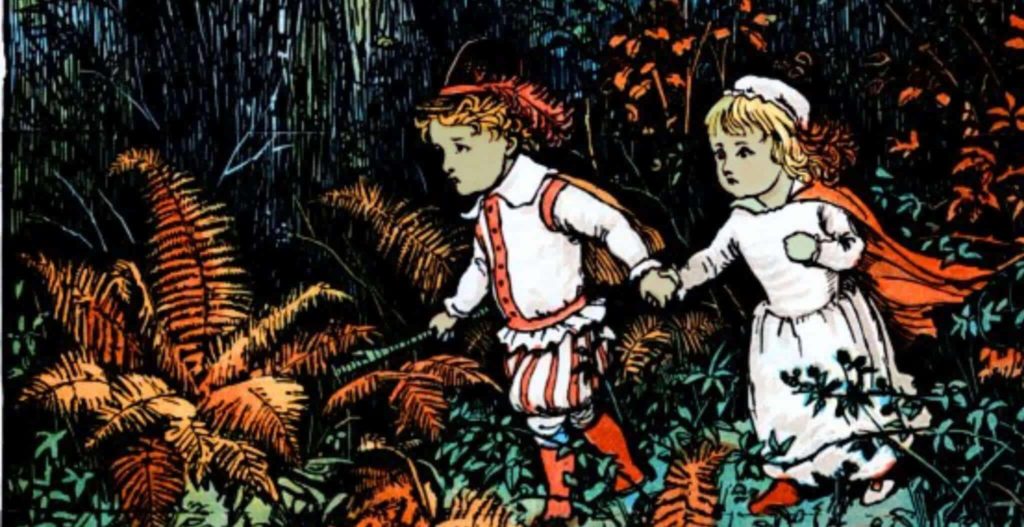Last updated on February 22nd, 2023 at 05:00 am
Viking weddings were steeped in tradition and ceremony and played a vital role in Viking society. These weddings were not just about two people getting married; they were also about joining two families and continuing the Viking community.
They were elaborate affairs, with many rituals and customs that symbolized the importance of the union. From the exchange of gifts to the feasting and dancing that followed, they celebrated love, family, and community. In this post, we will explore the fascinating world of Viking weddings and learn about the customs and traditions that made them so special.

Customs and Important Traditions
Marriage meant two big things – the first was an alliance between families. The second would be celebrating Frigga, the goddess of love and childbirth, and one who would benefit the most from a wedding and the soon-to-be growing families.
While modern-day weddings might revolve primarily around the union of just the groom and bride, Viking Weddings were about the fusion of two families.
Members of both sides of the wedding would meet to negotiate the conditions of their relationship after the marriage and the price paid for the bride beforehand.
Called “mundr,” the price paid for the bride was provided by the groom in return for the ability to marry the bride.
Once a price was agreed upon to be paid by the groom to the bride’s family, the heads of both families would meet and negotiate a time for the wedding to occur. This would usually be about a year, sometimes, not always, including the bride’s opinion.
This chosen date would always fall on a Friday. A substantial part of Viking and Nordic culture, Friday was the day of Frigga.
Having the wedding on Frigga’s day was the perfect opportunity to bless the family with a happy marriage and many children.
A marriage was planned by the men of the groom and the bride’s family. It took a few hundred years (until the 12th century) for the bride’s permission to be mandatory. Before then, the men of the households were the negotiators, managers, and creators of the wedding.
A Celebration of Love and Union
Once the wedding was set, the families planned the grand festivities. While we consider weddings one-day endeavors today, Viking weddings were spread across a week.
This weeklong expenditure would involve the broom and bride exchanging swords, hundreds of drinks, feasts, food of all kinds, and cultural icons of significance, like replicas of Thor’s hammer.
It was a huge deal for the two families involved when a wedding happened, again thanks to the significant alliance negotiated in advance.
When the time for the celebration rolled around, ensuring that the wedding didn’t line up with poor weather was incredibly significant.
As food and drinks of every kind were required to make the most of the event, most families would negotiate timing to coincide with the harvest season. This would ensure that both families only had the best to offer for the wedding celebration.
Fortunately, these events were planned by family members months in advance. As the wedding approached, however, many smaller, more intricate parts of the wedding came to fruition.
One major part is the separation of the groom and bride, as they joined their same-sex familial counterparts for comfort and guidance before the wedding.
Once split, the bride, only a day before marriage, would visit a bathhouse with the exclusively-married females of her family to remove a kransen before bathing in steaming water and then freezing water.
Removing the kransen, a head wreath representing virginity, was a massive part of the marriage preparation. It now meant the bride was prepared to lose her virginity to her new husband.
The groom would meet with the married men of his family, breaking into the grave of an ancestor and retrieving a sword.
These swords were kept as part of the life of a Viking, with the retrieval symbolizing the entry into a new life filled with marital promises and a family.
The sword, taken yet again a day before the wedding, would then be given to the bride during the marriage.
Selective Preparation
Viking marriages were very particular – while clothing wasn’t assumed to have been culturally relevant when it came to being wed, hair was. Nordic traditions emphasized long, ornate bridal hair alongside decorative hair for the groom.
In preparation for the wedding, the bride receives a traditional crown, passed down through her family’s generations for each newlywed.
The men would carry the blade retrieved from their buried ancestor, complete with a symbol of Thor.
Thor played a large part in the Viking wedding process, believed to be a considerable part of the family’s future. While the apparent manifestation would be Thor’s strength and power throughout the marriage, weddings also called upon Thor to bless their future children with stability and long lives.
In addition to representative options, there were more direct actions – one such common one would be the sacrifice of a cow by the Gothi, who was the negotiator, and creator of the wedding, to the goddess Frigga.
This would bless the marriage with great love, fertility, and battle readiness, preparing the couple for years to come.
A Celebration of Significance
As the bride and groom met to unite their families and selves, they would exchange swords. As mentioned, the groom’s sword came from an ancestor’s grave. The bride’s sword came from her living family, representing the interlocking of living and deceased families.
Alongside (or on) these swords would be the exchange of rings. Again, depending on the families, the rings would have been attached to the blades, adding further meaning to the exchange or given separately and held by the two individually.
Once married, then the festivities began.
While Viking and Nordic cultures didn’t consume a wide variety of food and drink, they went all out for a wedding, often using a large portion of a seasonal harvest.
The bride and groom would get drunk on mead, the families would feast, and everyone would get to know each other.
These were vast gatherings of great significance for both families, and they helped start a significant relationship between the groom and bride. Once the celebration ended, the families would be great allies, supporting and representing the couple throughout their lives before repeating the process with other marriages.

